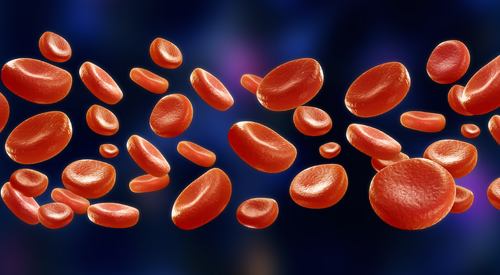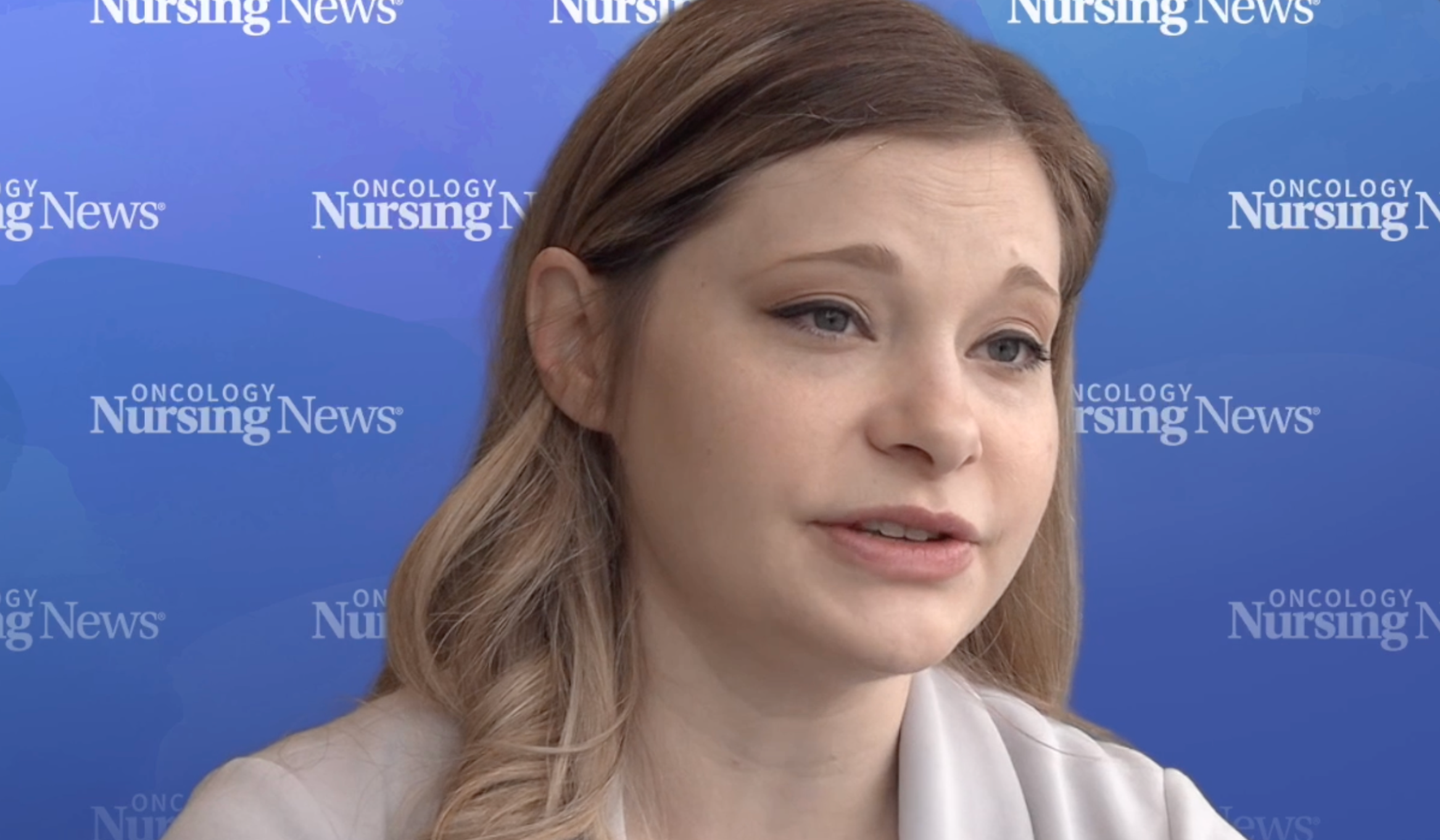Recognition of the Advanced Practice Preceptor Role in Oncology
A tiered level preceptor recognition program offers a cost-effective organizational intervention designed to acknowledge and incentivize the contributions of advanced practice preceptors.
Medical center unique design kit for social networks stories. Online medical assistance service mobile screen templates for app. UI UX layouts vector illustration. GUI set with people characters: © alexdndz - stock.adobe.com

Across the United States, there are significant shortages of cancer clinicians, with burnout being a contributing factor.1 Turnover profoundly impacts costs for health care organizations and poses concerns for quality patient care. Estimated costs to replace 1 advanced practice provider (APP), including nurse practitioners and physician associates, is 1.5 times their annual salary.2,3 However, organizational interventions that support clinicians help prevent and reduce burnout.4-6 Current evidence recommends protective factors to combat burnout and attrition such as providing recognition, supporting a sense of accomplishment, and fostering quality work relationships.7-10
Advanced practice preceptorship is unique in comparison with programs for nursing and physician colleagues, as APPs often serve as specialty trainers to facilitate a transition to practice for students, newly board-certified employees, and fellows. Onboarding is completed within a determined timeline for newly hired nurse practitioners and physician associates to transition to practice. Additional preceptor availability constraints include productivity benchmarks. There are significant sustainability challenges as the demand for advanced practice preceptors continues to increase. The US Bureau of Labor Statistics projects advanced practice nursing alone will grow 52% between 2019 and 2029, which causes concern for available clinical sites. Barriers identified by preceptors to mentoring APP students include the time commitment of supporting students, time-constrained clinical practice, physical space limitations, and lack of employer support.11
As APPs expand into specialty roles within the cancer space, the need for training will also grow. APPs onboard new hires to provide specialized training as well as educate and train students. These preceptorships are voluntary and add another layer to increasing work demands. Many APPs feel a sense of accomplishment in giving back by educating and training students.12 However, given increasing work demands, some argue preceptors should be compensated by schools or incentivized by their institutions to help ensure an ongoing pool of preceptors and recognition for their efforts.13 While monetary compensation has limitations, there are other ways in which to incentivize preceptors to continue their invaluable work, such as awards, adjunct faculty status, and professional development.13
Theory of Job Enrichment
The theory of job enrichment was developed to identify factors contributing to job satisfaction or dissatisfaction among workers. According to this theory, components of job satisfaction include maximizing autonomy, highlighting achievements through recognition, assigning a challenging workload, expanding responsibilities, and promotion.14 Factors contributing to job dissatisfaction include administrative duties, supervision, interpersonal relationships, physical working conditions, job security, benefits, and salary.14 Job demands, such as organizational and departmental expectations, personal characteristics, competency, workload, professional support, and ongoing professional evaluation are factors within a provider role affecting APP retention.15,16 Lack of preceptors can devastate a strained health care system. Therefore, developing a preceptor recognition program accounting for internal and external factors guided by the job enrichment theory fosters job satisfaction and retention.17
Tier Level Recognition Program
In the current health care climate of post-COVID-19 financial constraints, incentives for preceptor services are often limited. A preceptor recognition program may serve as an organizational intervention to support institutional missions and preserve provider relationships in a cost-effective manner. A tier level recognition program would provide an advanced practice preceptor the opportunity to earn a lapel pin, nomination for an award, and/or professional development funds. To assess the cost, an analysis of the past year’s precepting assignments would inform budget planning. For example, if 30% of 84 APPs (n = 25) precepted in the past year with 20% meeting tier 1 criteria (n = 5), 10% meeting tier 2 criteria (n = 3), and 10% meeting tier 3 criteria (n = 3), the estimated cost of the entire program would be the cost of the pin ($2.06) in addition to awarded professional development funds (total cost of $1372.66). This proposed program could be modified to any institution and aligned with established goals such as completion of preceptor training courses, student placement benchmarks, and recruiting efforts. Preceptor and preceptee relationships would further be enhanced and a recognition program could serve as a pipeline for clinician recruitment.
Conclusion
The shortage of cancer clinicians in the United States necessitates strategic methods to enhance organizational support and mitigate turnover costs. Lack of advanced practice preceptors in cancer care presents challenges amid current health care system financial constraints. A tiered level preceptor recognition program offers a cost-effective organizational intervention designed to acknowledge and incentivize the contributions of advanced practice preceptors. The program further enhances preceptor-preceptee relationships that foster a sense of accomplishment and professional fulfillment. Cumulatively, an advanced practice preceptor recognition program not only contributes to the retention of preceptors but also serves as a strategic approach to ensure a sustainable team of specialty cancer care clinicians.
References
- Trufelli DC, Bensi CG, Garcia JB, et al. Burnout in cancer professionals: a systematic review and meta-analysis. Eur J Cancer Care (Engl). 2008;17(6):524-531. doi:10.1111/j.1365-2354.2008.00927.x
- Kapu AN, Card E, Jackson H, et al. Development and testing of an advanced practice clinical advancement program within an academic medical center. J Am Assoc Nurse Pract. 2020;33(9):719-727. doi:10.1097/JXX.0000000000000456
- Jackson H, West O, Austin A, Peal K. Interventions to improve advanced practitioner work-related quality of life and patient satisfaction. J Adv Pract Oncol. 2023;14(1):49-53. doi:10.6004/jadpro.2023.14.1.4
- Shanafelt TD, Gorringe G, Menaker R, et al. Impact of organizational leadership on physician burnout and satisfaction. Mayo Clin Proc. 2015;90(4):432-440. doi:10.1016/j.mayocp.2015.01.012
- Gómez-Gascón T, Martín-Fernández J, Gálvez-Herrer M, et al. Effectiveness of an intervention for prevention and treatment of burnout in primary health care professionals. BMC Fam Pract. 2013;14:173. doi:10.1186/1471-2296-14-173
- Zhang XJ, Song Y, Jiang T, Ding N, Shi TY. Interventions to reduce burnout of physicians and nurses: an overview of systematic reviews and meta-analyses. Medicine (Baltimore). 2020;99(26):e20992. doi:10.1097/MD.0000000000020992
- Ashooh MP, Barnette K, Moran TP, O’Shea J, Lall MD. Advanced practice provider burnout in a large urban medical center. Adv Emerg Nurs J. 2019;41(3):234-243. doi:10.1097/TME.0000000000000255
- Waddimba AC, Scribani M, Hasbrouck MA, Krupa N, Jenkins P, May JJ. Resilience among employed physicians and mid-level practitioners in upstate New York. Health Serv Res. 2016;51(5):1706-1734. doi:10.1111/1475-6773.12499
- Leiter MP, Maslach C. To curb burnout, design jobs to better match employees’ needs. Harvard Business Review. March 17, 2023. Accessed February 29, 2024. https://hbr.org/2023/03/to-curb-burnout-design-jobs-to-better-match-employees-needs
- Smoldering burnout among cancer care team members? Association of Cancer Care Centers. March 1, 2019. Accessed February 29, 2024. https://www.accc-cancer.org/home/news-media/news-releases/news-template/2019/03/01/smoldering-burnout-among-cancer-care-team-members
- Burt L, Sparbel K, Corbridge S. Nurse practitioner preceptor resource needs and perceptions of institutional support. J Am Assoc of Nurse Pract. 2021;34(2):348-356. doi:10.1097/JXX.0000000000000629
- Webb J, Lopez RP, Guarino AJ. Incentives and barriers to precepting nurse practitioner students. J Nurse Pract. 2015;11(8):782-789. https://www.sciencedirect.com/science/article/abs/pii/S1555415515006066
- Gardenier D, Arends R, Selway J. Should preceptors be paid? J Nurse Pract. 2019;15: 542-543. https://www.npjournal.org/article/S1555-4155(19)30564-1/pdf
- Miner JB. Organizational Behavior 4: From Theory to Practice. 1st edition. Routlege; 2007.
- Fournier J, Lightfoot N, Larocque S, Johnson J, Eger T. Theory of nurse practitioner job satisfaction. J Nurse Practi. 2019;15(4):290-294. https://www.sciencedirect.com/science/article/abs/pii/S1555415518309103
- Pastores SM, Kvetan V, Coopersmith CM, et al. Workforce, workload, and burnout among intensivists and advanced practice providers: a narrative review. Crit Care Med. 2019;47(4):550-557. doi:10.1097/CCM.0000000000003637
- Wiseman RF. Survey of advanced practice student clinical preceptors. J Nurs Educ. 2013;52(5):253-258. doi:10.3928/01484834-20130319-03





